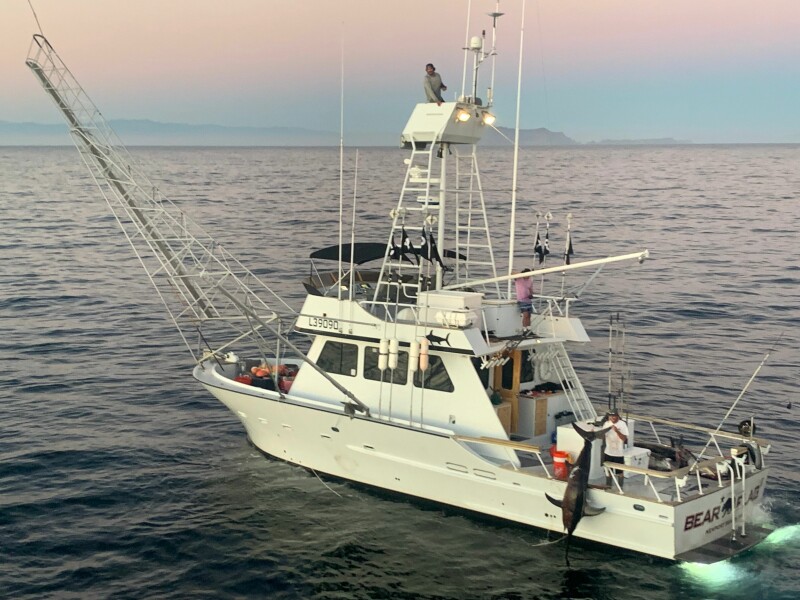The first commercial fishing permits for using deep-set buoy gear in California’s swordfish fishery began to be issued by the National Marine Fisheries Service Sept. 15, marking a milestone in the long transition away from large mesh drift gillnets off the West Coast.
Gillnets are to be finally phased out by 2027, replaced largely by deep-set buoy gear –
The mainlines typically have 1 to 3 circle hooks with a light attached to shine below the thermocline at 20-70 meters (65 to 230 feet) in California waters. The gear is designed to be actively tended, with strike indicators at the surface to alert fishermen when a fish is on.
Deep-set gear has been in use under federal exempted fishing permits and was authorized by the Pacific Fishery Management Council in 2019 after 10 years of research and testing. It’s planned to become the primary California fishing method, with harpoons continuing as a supplemental fishery.
Large-mesh drift gillnets drew fire from environmental and conservation groups for taking a toll on marine mammals. They pushed for state and federal legislation leading to a phase-out of the drift net gear.
In 2018, the California legislature voted to terminate all drift gillnet permits by Jan. 31, 2024. The bill also established a transition program to help fishermen mitigate transition costs and develop new techniques to efficiently harvest swordfish efficiently with less bycatch. Some $2.3 million in state funds and $1 million provided by Oceana, an environmental non-profit, have helped remove 50 miles and 54 tons of gillnets from the Pacific. Twenty-three fishermen with active permits received $110,000 in compensation; the remaining 15 with inactive permits received $10,000.
“This is a banner day for whales, dolphins and sea turtles that swim off our shores, and a massive leap forward for sustainable swordfish fishing in California,” said Geoff Shester, scientist and California campaign director for the environmental group Oceana. “A thriving and profitable swordfish fishery that does not threaten marine life is a win-win for everyone and represents one of the great success stories of fisheries management and ocean conservation not just here in California but in the nation.”







